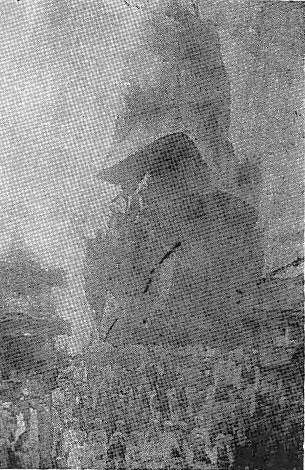About Odate Bayashi
Origins

Baryuko Float (1898)
The Odate Bayashi music played by festival musicians is said to be based on festival music from Kyoto. There are two theories of how the Kyoto music style came to Odate. The first proposes that Lord Satake on his way to Akita played the music as he made his way north and was then passed down through his successors. Another proposes that a powerful figure from Odate may have learned the music during their youth in Kyoto.
The earliest surviving records of the Odate Bayashi being performed date back to 1889.
Photos from 1898 of the Baryuko float show similarities to that of the floats at the Gion Festival in Kyoto. Additionally, Odate Bayashi resembles Hanawa Bayashi music which is directly descended from Kyoto.
Odate Bayashi Preservation Society

Odate Bayashi Preservation Society
The Odate Bayashi Preservation Society was established to pass on the traditional folk music to following generations. In 2001, Odate Bayashi was named an Intangible Folk Culture Property of the city. Though the festival is held in September, performers begin practicing the Odate Bayashi in late May for the difficult flute arrangements, and the drum and handbell parts in July. In August dancers begin join in and by the Obon season the sound of neighborhood groups practicing can be heard throughout the city. The society helps train performers in the proper technique and history.
Four Songs of the Odate Bayashi
- Yose Bayashi—Played to mark the start of the festival and musical performances.
- Odate Gion Bayashi—Also called the “Odate Matsuri Bayashi”. This piece is the most representative arrangement of the four. It is played when the float is being pulled around the city as participants sing “Yo-iyo, Iyasaka sa-sa” (a chant for prosperity).
- Ken Bayashi—It is said that long ago samurai used to dance with their swords to this song. Neighborhood groups perform this song at each neighborhoods headquarters that they pass.
- Kaeriyama—It is said that this song originated as the chant of soldiers returning victorious from the battlefield. Groups perform the song when passing another group, climbing a hill, and when returning to their neighborhood.
Shamisen, handbell, and taiko drums are played during the Odate Bayashi while dancers perform with fans.